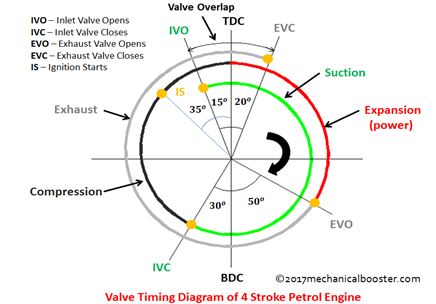There are many types of Internal combustion engine. Some important types are mentioned below:
● On the basis of fuel used
- Diesel Engine
- Petrol Engine (or Gasoline Engine)
● On the basis of strokes per cycle
- Two-stroke Engine
- Four-stroke Engine
● On the basis of the type of ignition
- Spark Ignition Engine (S.I. Engine)
- Compression-Ignition Engine (C.I. Engine)
● On the basis of the arrangement of valves
- L-head Engine
- I-head Engine
- T-head Engine
- F-head Engine
● On the basis of the type of cycle
- Otto Cycle Engine
- Diesel Cycle Engine
- Dual Cycle Engine
● On the basis of the cooling system used
- Air-cooled Engine
- Water-cooled Engine
● On the basis of application
- Automobile Engine
- Aircraft Engine
- Locomotive Engine
- Marine Engine
- Stationary Engine
The list is not ended here. There are still many more types of Internal combustion engine used in various applications.


